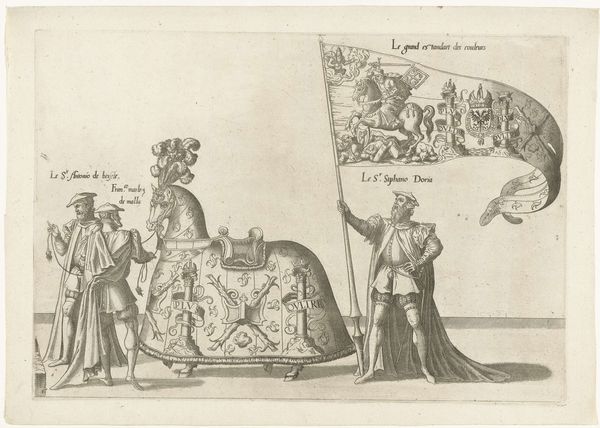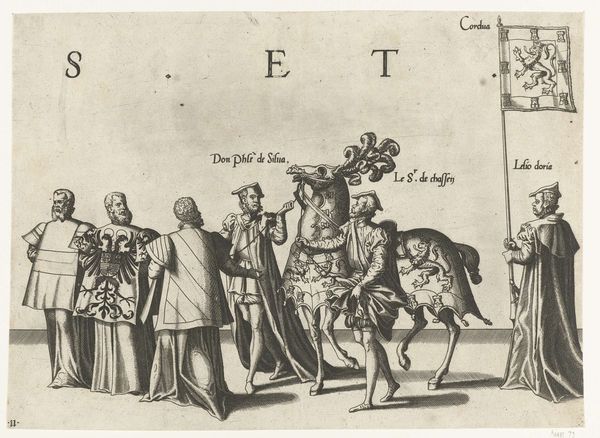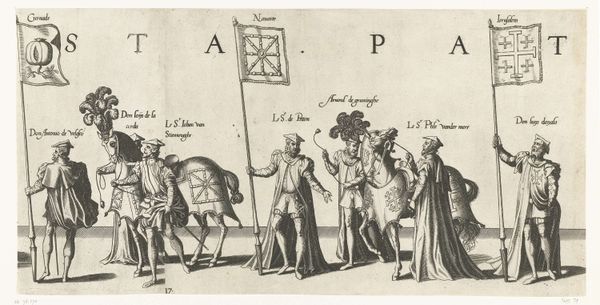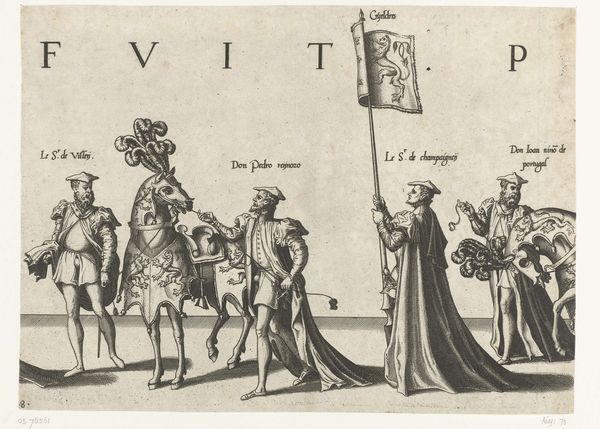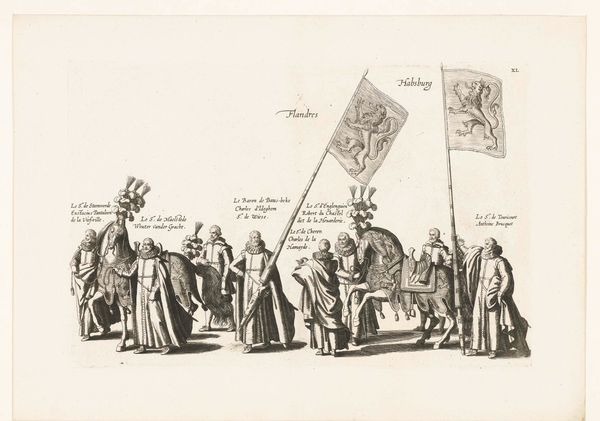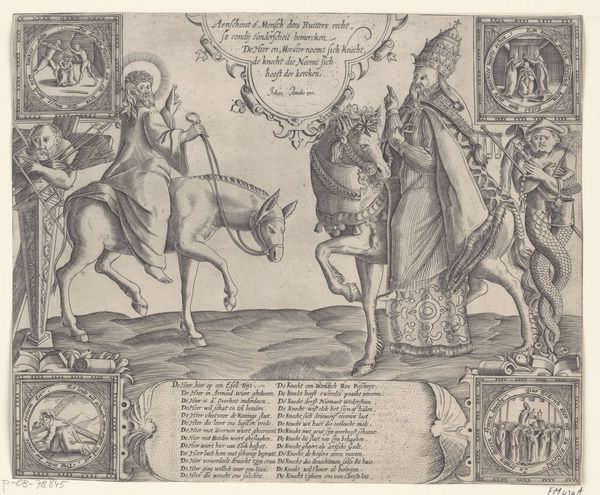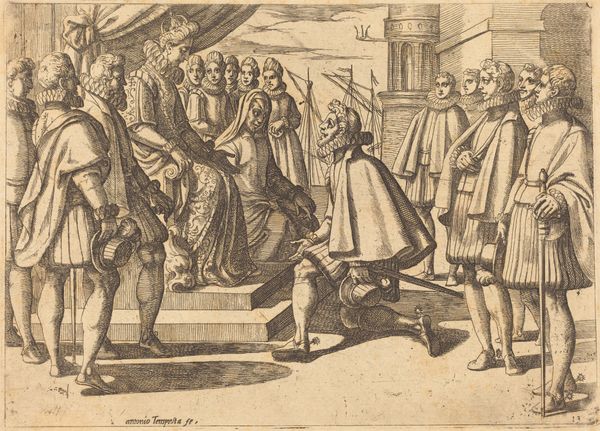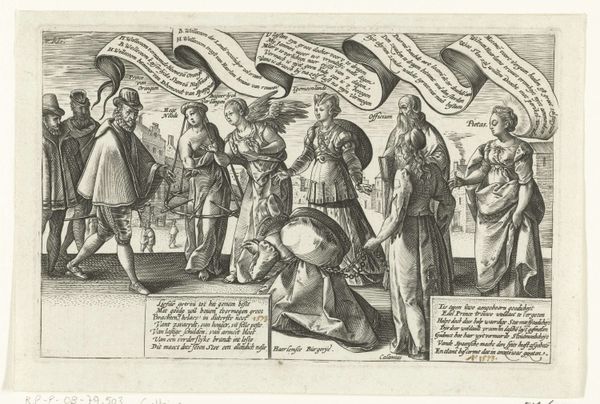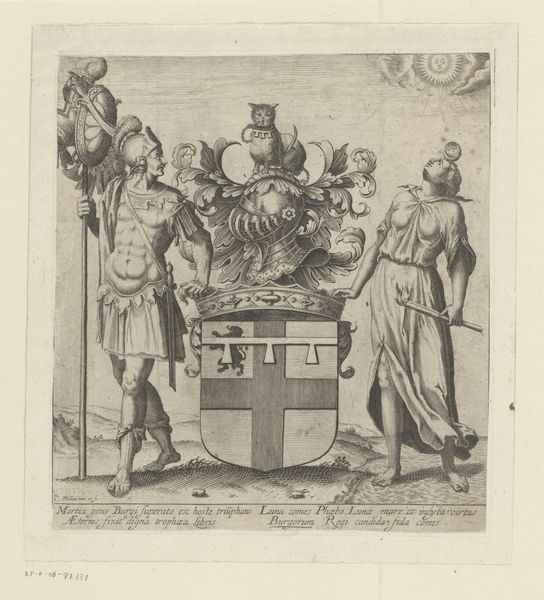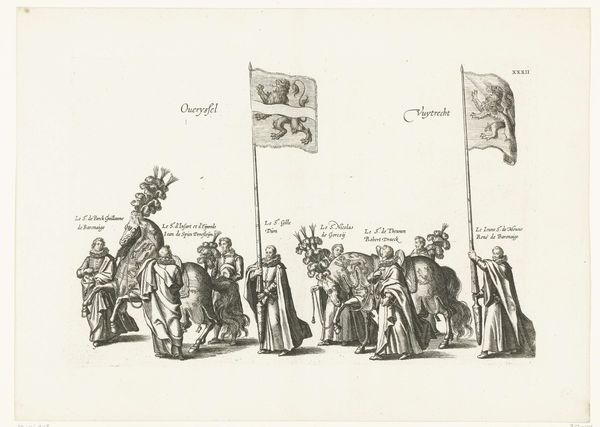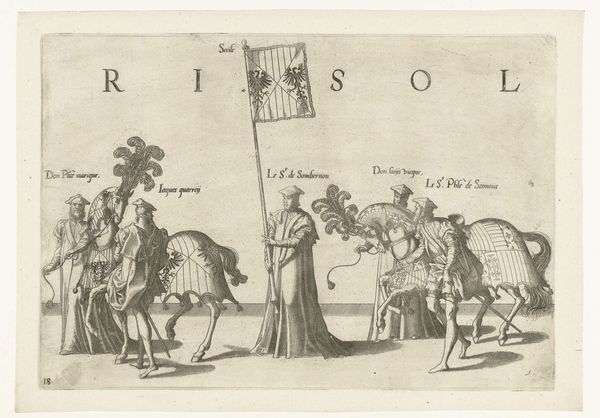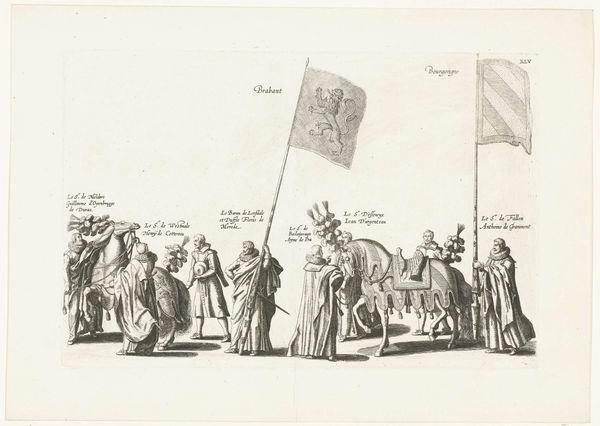
print, engraving
#
medieval
# print
#
figuration
#
11_renaissance
#
line
#
cityscape
#
history-painting
#
engraving
Dimensions: height 235 mm, width 237 mm
Copyright: Rijks Museum: Open Domain
Curator: Here we have “Deel van de optocht, nr. 16” – a segment of a procession – created in 1559 by Joannes van Doetechum the elder. It’s an engraving, a print, held at the Rijksmuseum. What springs to mind for you? Editor: Initially, I’m struck by this really meticulous line work. It’s so precise! Yet, there’s something almost… whimsical about the composition. It feels like a stage production, these figures frozen in elaborate costumes. A rather stiff staging, at that. Curator: Indeed. The linear quality defines much of the Renaissance aesthetic, relying on clear outlines and structured forms to depict narrative and meaning. But beyond mere aesthetic considerations, processions held huge symbolic weight in the 16th century. Editor: Oh, tell me more! Curator: Well, think about it: Who gets to be in the procession? Where are they positioned? What symbols are they carrying? This print captures not just an event, but the power dynamics, the cultural memory of a time. The flag, the costumes, it’s all speaking a visual language that would have been immediately legible to its contemporary audience. What kind of messages might we read in the imagery today? Editor: The way those men look toward that high-held flag… There’s such an interesting juxtaposition of pride and, dare I say, even a bit of performative duty. And the horse! That adorned, almost pumpkin-like ornamentation seems to simultaneously celebrate and stifle the poor creature's natural form! Curator: It does highlight the control exerted over the natural world and its deployment in projecting the status and wealth of its handlers. Editor: Right! Almost a visual parallel for the societal constraints. But, I do wonder what occasion this particular part of the procession commemorated. Curator: Sadly, specifics are not given here; however, broadly speaking, Renaissance processions were important vehicles to mark significant events of royal visits or military triumph to demonstrate allegiance and social order. So a piece like this would remind viewers of historical and societal traditions, but from a single angle in history. Editor: A staged display then and a framed impression now. Funny how little our need for some kind of display has actually changed. Curator: Visual symbols, indeed. Echoes through time.
Comments
No comments
Be the first to comment and join the conversation on the ultimate creative platform.
